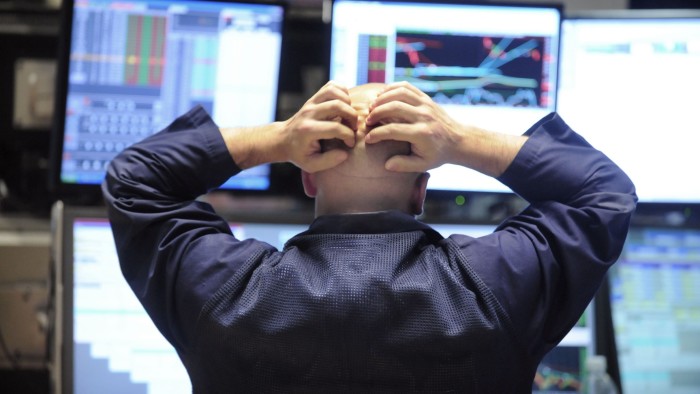Unlock the Editor’s Digest for free
Roula Khalaf, Editor of the FT, selects her favourite stories in this weekly newsletter.
The writer is founder and chair of Dimensional Fund Advisors
When markets feel as shaky as they do now in the US, it is normal to ask: is this time different?
After all, the S&P 500 index is down some 4 per cent already this year and there is considerable economic uncertainty. But anxious investors today should consider where the market was five years ago, and how well those who tuned out the noise performed.
Then, the Covid-19 pandemic had spread rapidly, and the US stock market dropped 34 per cent in just 23 days — faster than ever before. The Vix index, a measure of investor expectations of volatility often called Wall Street’s “fear gauge”, hit a record high.
Yet within a year, the market had not only recovered, but also risen 78 per cent from its lowest point. People who sold during the panic missed one of the strongest recoveries ever. Each uncertain period brings its own unique challenges, making it more difficult for investors to keep the faith.
When I talk with investors today, some point to government debt, global tensions, or new technologies — all of which are valid concerns. But history shows us that markets have overcome every previous “unprecedented” challenge. The Great Depression, world wars, the inflation crisis of the 1970s, Black Monday in 1987, the Great Recession of 2008 — markets have weathered them all.
Each crisis can feel like the end of the world when it happens, yet the pattern of recovery stays remarkably consistent. Over 50 years of working in finance has consistently shown me two things: we cannot predict the future, but despite that uncertainty, markets have eventually bounced back.
There are no guarantees, of course, but that is the way it has worked historically. When markets swing wildly, our instinct is to act to protect ourselves. Some investors respond by pulling their money out until things “calm down”. But this instinct typically results in lower returns than if you did nothing.
The impact of being out of the market for just a short period of time can be profound. Consider a hypothetical investment in the stocks that make up the Russell 3000 index, which is a good benchmark for the broad US stock market.
A $10,000 investment made in 2000 turned into $66,038 for the 25-year period ending December 31 2024. Over that same period, if you miss the Russell 3000’s best week, which ended November 28 2008, the value shrinks to $55,114. Miss the three best months, which ended June 22 2020, and the total return dwindles to $46,554, roughly losing 30 per cent.
This does not mean you should never alter your investment mix. The key is knowing the difference between thoughtful changes based on your life events and hasty decisions driven by scary headlines. The first is smart financial planning; the second is more like gambling.
Companies are constantly seeking to solve problems and create opportunities. Some ideas may take off. Others may not. Investors are rewarded for taking on some of that risk. And because the risk is spread across literally thousands of companies, the stock market has positive expected returns even during stretches when the overall economy slows.
Markets have returned on average about 10 per cent a year, which seems like a fair return, given the level of risk taken on. Successful investing is about picking the right portfolio — and having the right mindset. A disciplined approach helps you handle uncertainty without freezing up.
I have found that it helps to first, accept uncertainty as the cost of opportunity — higher expected returns are your “reward” for taking on greater risk. Second, it is important to match your investments with your life, not the news cycle. Third, find partnerships, not predictions. Working with a trusted financial adviser can help you create a personal plan that fits your goals and aligns with your values. I believe that understanding how markets work leads to better decisions.
Investors who grasp how markets function are more likely to stay in their seats during periods of volatility and reap the substantial rewards of compounding. An investor who put $10,000 in the S&P 500 at the beginning of 1970 and simply let it ride would have more than $3mn today despite living through eight recessions, multiple wars, political upheavals, and technological revolutions that transformed entire industries. That is not because they were lucky — it’s because they recognised that the question is not whether uncertainty will appear, but how we respond when it does.
